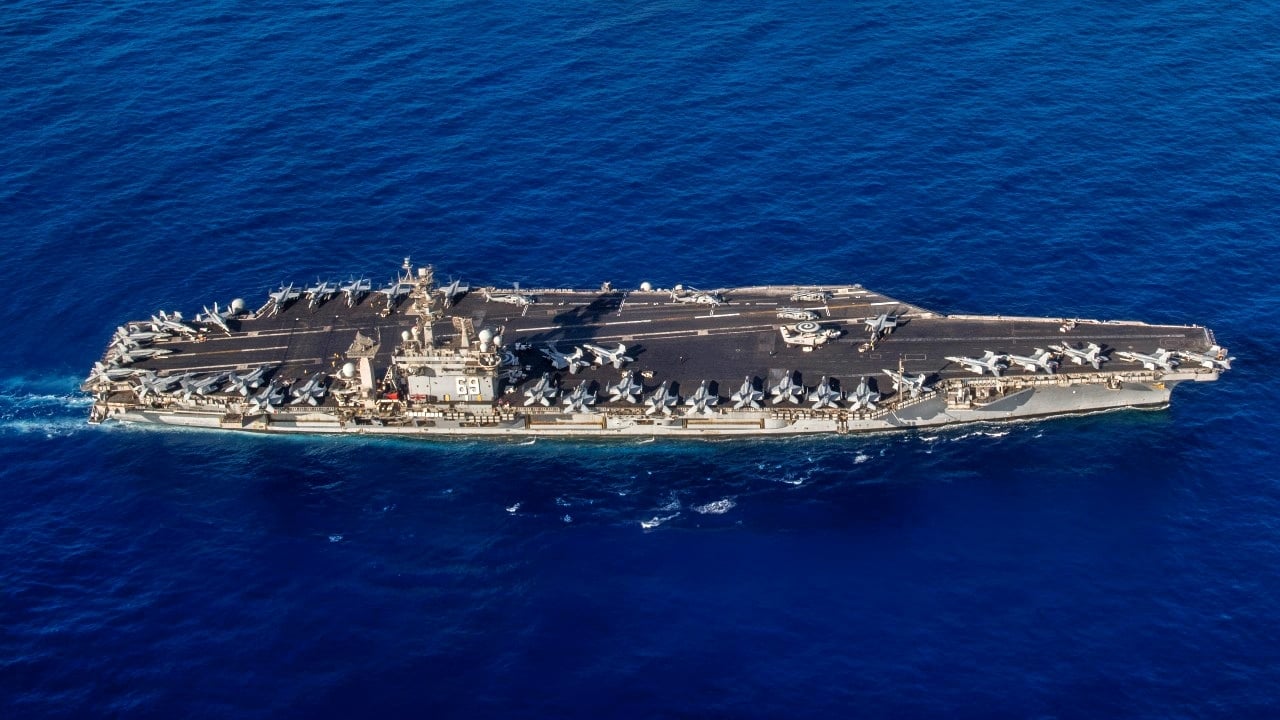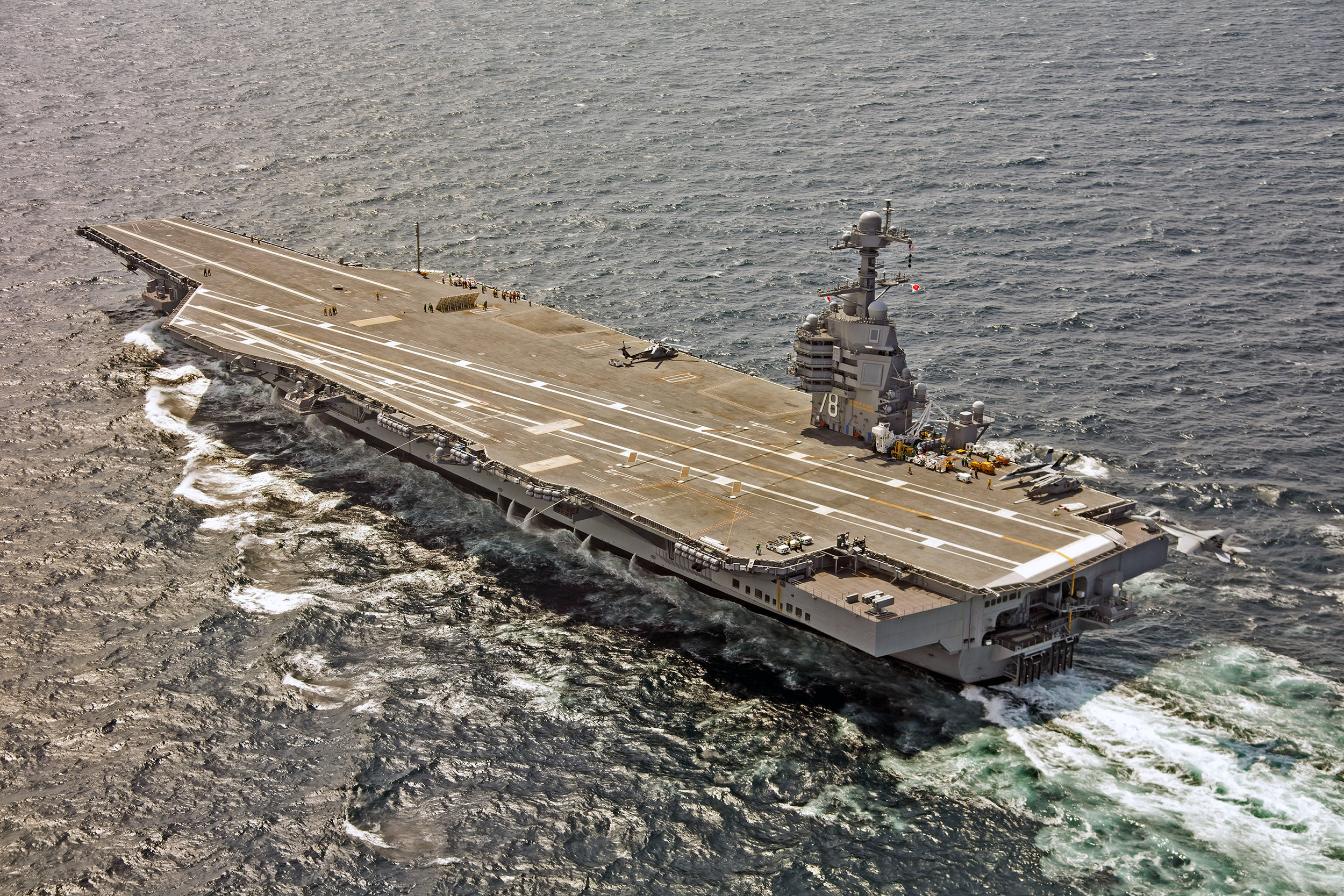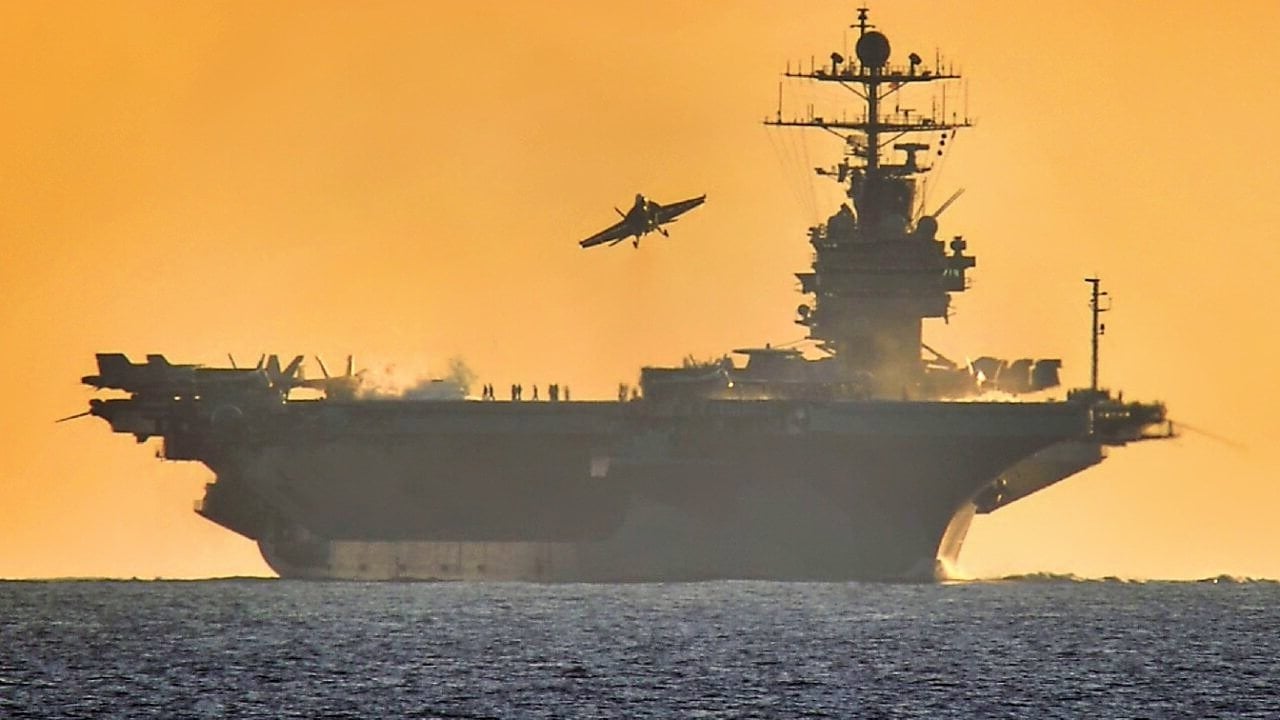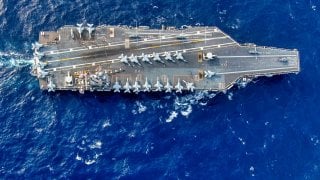The U.S. Navy's Great Aircraft Carrier Shortage
The United States Navy is looking increasingly stretched thin as it continues to juggle its limited number of nuclear-powered aircraft carriers by deploying the massive warships on force projection missions in global hotspots.
The U.S. Navy is Stretched Thin on Aircraft Carriers: Do Our Adversaries Know it?: The United States Navy is looking increasingly stretched thin as it continues to juggle its limited number of nuclear-powered aircraft carriers by deploying the massive warships on force projection missions in global hotspots.

It is becoming apparent that there aren't enough available to deal with multiple threats.
The U.S. Navy Is Short on Aircraft Carriers
On Sunday evening, United States Secretary of Defense Lloyd Austin ordered a guided missile submarine to the Middle East to support the U.S. Navy forces already in the region.
Austin further called upon the USS Abraham Lincoln (CVN-72) and her strike group to head there as quickly as possible following increased tensions as Israel and Hamas are unlikely to reach a cease-fire agreement.
CVN-72 had already been ordered to the Middle East to replace the USS Theodore Roosevelt (CVN-71) carrier strike group, The Associated Press reported.
USS Abraham Lincoln was on track to arrive by the end of the month, while CVN-71 was due to head back to the United States.
The U.S. Navy has maintained a carrier presence in the Red Sea since last fall when the Iran-backed Houthi rebels in Yemen began to target commercial shipping in the region, claiming it was in support of Hamas.
The deployment of the carriers has now left a void in the Indo-Pacific, and while temporarily – as USS George Washington (CVN-73) will soon arrive in Yokosuka, Japan, and take over as the U.S. Navy's forward-deployed carrier in the Seventh Fleet – it further highlights the shortage of the warships.
"The U.S. Navy only has 11 nuclear-powered supercarriers, all produced by a single company, HII, which is currently working on the next generation of nuclear-powered aircraft carriers. These aircraft carriers are the largest warships in the world, and each has an expected life span of approximately fifty years," explained Irina Tsukerman, president and geopolitical analyst at Scarab Rising.
These warships are very expensive to produce and time-consuming to build, which explains the limited number.
Still, Tsukerman told The National Interest that the shift of the recent global crises to the maritime dimension is causing these supercarriers to be spread too thin.
"The high costs include not only the production of new ships, but maintenance. Additionally, producing new nuclear-powered aircraft carriers takes a long time, so even if they are commissioned well in advance of the current crises, there is no guarantee that the new supercarriers will be ready in time to confront the proliferating challenges," Tsukerman added. "The Navy has long been criticized for poor maintenance of its warships overall; the supercarriers due to their sheer size require extra care, which means that at any given point in time about a half of them is out of commission."
The Carriers Are Also Impacting the Rest of the Fleet
The other problem is that the United States simply lacks the facilities to build and maintain its fleet.
"While the Ford-class carriers are replacing the Nimitiz-class carriers, the U.S. Navy has not been able to come up with sufficient number of newer ships to expand the fleet or to be able to move sufficient numbers of the warships everywhere they are needed simultaneously," warned Tsukerman.
The issue is compounded by the fact that the sea service has then extended the deployments – as it did with the USS Gerald R. Ford (CVN-78), which remained in the Eastern Mediterranean months longer than planned, while USS Dwight D. Eisenhower (CVN-69) saw her deployment extended twice.

This ends up being a class of the proverbial "Peter robbing Paul", because the longer the supercarriers are deployed, the longer they spend in the port for maintenance.
The matter is made worse whenever there is a crisis, as the carriers can't be everywhere.
"In February, the U.S. deployed three carriers to the Indo-Pacific. This means the Navy has to juggle the remaining carriers between assorted crisis areas – with the cost of building a new model being upwards of $13.3 billion per nuclear-powered carrier," said Tsukerman. "Moreover, these warships are the dream of every U.S. adversary due to their size, complexity, and costs so they become easy targets for hostile forces. The U.S. can't afford to lose such a warship but it also can't really afford to build new ones."
A Temporary Problem or an Enduring One for the U.S. Navy?
By the end of the summer, the U.S. Navy could have the juggling of its carriers sorted out – and perhaps Israel and Hamas can reach a settlement that brings a ceasefire in Gaza. If that is the case, the shortage of carriers might be a distant memory in a few months.
"Over the next few weeks to perhaps a few short months, this vulnerability gap shouldn’t present a major strategic problem, just a temporary tactical/logistical problem," explained Matt Shoemaker, former Defense Intelligence Agency (DIA) intelligence officer.

"However, should the conflict in the Middle East turn into a wider war, the Naval vulnerability in the Pacific would become a major issue the Chinese will almost certainly try to exploit through various means including sending their own ships into the Indo-Pacific area to crowd out other nations as well as messaging to countries friendly to Washington that America cannot protect them," Shoemaker told The National Interest.
Moreover, it is unclear if the presence of a carrier in the Red Sea will deter the Iran-backed Houthis, while missile strikes on their positions won't likely impact the capabilities of the militants.
"As we learned in the 1990s and 2000s, missile strikes alone rarely solve geopolitical threats," Shoemaker added. "At best, the current strategy will manage rather than entirely solve the Houthi threat to commerce through the Red Sea and Suez Canal. The political decision would have to be made in Washington to have a far greater involvement in Yemen's conflict if we want to truly stop the Houthis. That decision has clearly not been made yet and I don't envisage that happening in the next 6 months."
More Aircraft Carriers? Maybe Not the Answer
Even if it was suddenly possible to increase the number of nuclear-powered carriers, that likely wouldn't be the answer. The U.S. Navy – like many of the branches of the military – is struggling with recruitment. At the same time, the shipyards don't have enough workers to build them.
"It's been well known in Washington that the US Navy has had acute structural issues for years going back to the two destroyer accidents in the last decade which highlighted the overstrained manpower and scheduling of the US Navy. Some have claimed the issues were largely swept under the rug. Lack of appropriate funding is definitely an issue but so is effective use of the funding already provided," Shoemaker continued.

Instead, the answer could be to focus not so much on a handful of large, costly warships, and to supplement the carriers with smaller vessels.
"The U.S. should be combining the deterrence value of extremely large warships – which is very limited unless the Navy is willing to act on its strategic communications and use those warships as intended to cause debilitating damage, at least once in a while – with the flexibility of smaller ships that are less costly to replace, have fewer human personnel, more autonomous capabilities that are well handled, and that still have the power to cause damage and to prevent smaller boats from swarming the expensive aircraft-carriers," Tsukerman. "Unless the U.S. changes strategy and starts doing damage to the adversarial capabilities, not merely responding defensively or patrolling the areas, it is only a matter of time before the various global crises prove to be too much, and these ships start sinking and accumulating costs that the Navy simply will not be able to replace or keep up with."
Author Experience and Expertise: Peter Suciu
Peter Suciu is a Michigan-based writer and long-time contributor to The National Interest. He has contributed to more than four dozen magazines, newspapers, and websites with over 3,200 published pieces over a twenty-year career in journalism. He regularly writes about military hardware, firearms history, cybersecurity, politics, and international affairs. Peter is also a Contributing Writer for Forbes and Clearance Jobs. You can follow him on Twitter: @PeterSuciu. You can email the author: [email protected].
Image Credit: Creative Commons.


